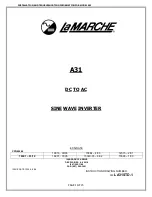
Software Overview
22
SLAA040
8.3.7
Interrupt Latency
The time required to execute an interrupt depends on the handling of the IRQ at
the four-word vector address or jumping further with a GOTO instruction. Using
the fast return from IRQ instruction, and branching from the IRQ vector to a
separate routine memory location, produces an IRQ overhead of:
3 sysclk (goto IRQ vector) + 4sysclk (goto/dgoto) + 1 sysclk (fast return) = 8
instruction cycles
The time between when the IRQ occurs and the routine executes its first
instruction depends on the instruction in the CPU pipeline when the interrupt
occurs. Running a repeat command delays the IRQ until the full number of
repetitions is finished.
NOTE: Using a delayed branch instruction (dgoto) and putting
two useful words of instruction behind this instruction saves the
CPU calculation power.(See the explanations about delayed
branches Section 8.3.8).
8.3.8
Branch Optimization (goto/dgoto, call/dcall, ...)
The easiest solution for a branch is to use the goto instruction. Since the ’C54x
has a pipeline to allow execution of one instruction in one clock cycle, a simple
branch instruction will take four cycles for execution. Example:
GOTO MARK
...
MARK:
DP = #1;
ARP = #5;
...
The program counter (PC) points after the last instruction (ARP=#5) past 6 sysclk
cycles. However, this can be optimized, using a delayed branch.
DGOTO MARK
DP = #1;
ARP = #5;
...
MARK:
...
The time to execute the same number of instructions is now only four CPU clock
cycles. (After four instructions, the PC points to the address MARK. The reason
for this is the processor’s pipeline finishes the instructions after dgoto and does
not just trash the already-processed fetch when the branch is in the pipeline’s
decoding state.
Conclusion: The goto and dgoto instructions both execute the branch in less
than four SYSCLCKs, but the dgoto instruction can execute the next two
instructions following dgoto in the same amount of time.
CAUTION:
Use the delayed branches carefully, since it looks confusing when
an instruction has been executed after a call instruction. A solution
is to first use the normal branches when writing the code, and when
all tasks have been finished, optimize the code with the delayed
algorithms.
Содержание TLV1562
Страница 6: ...vi SLAA040 ...
















































